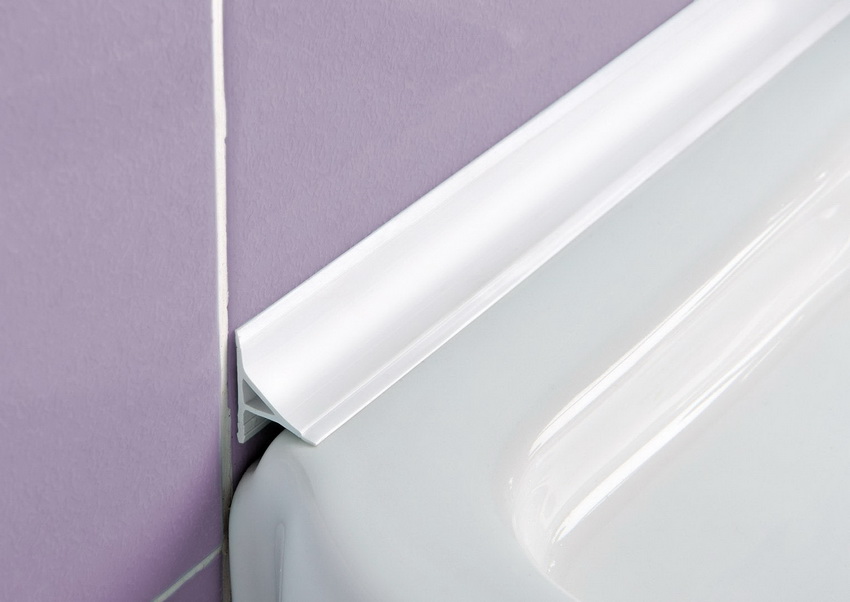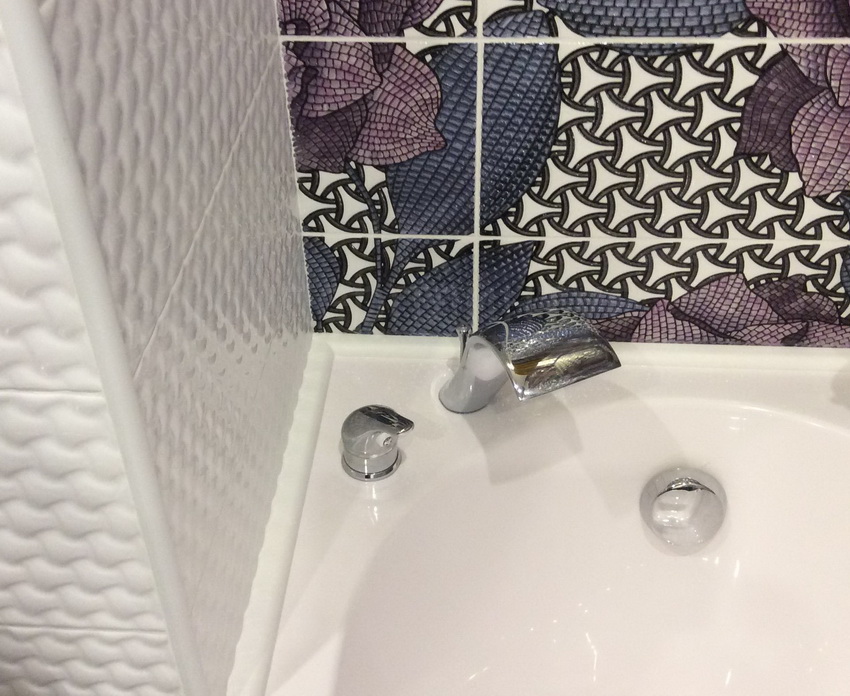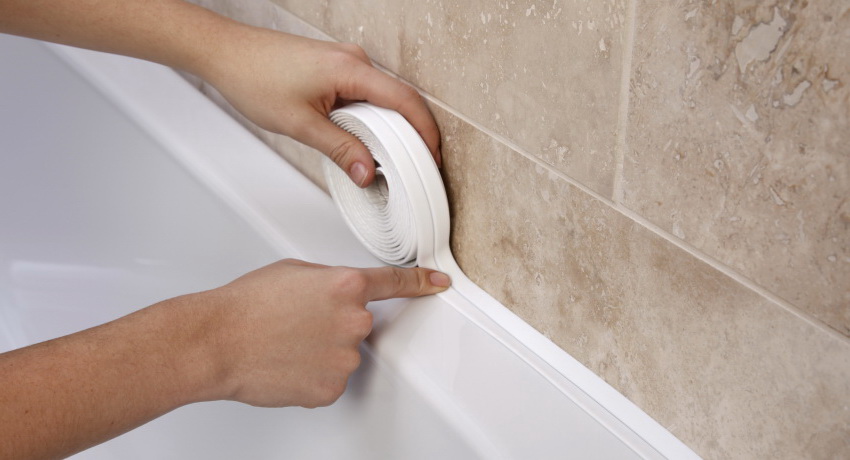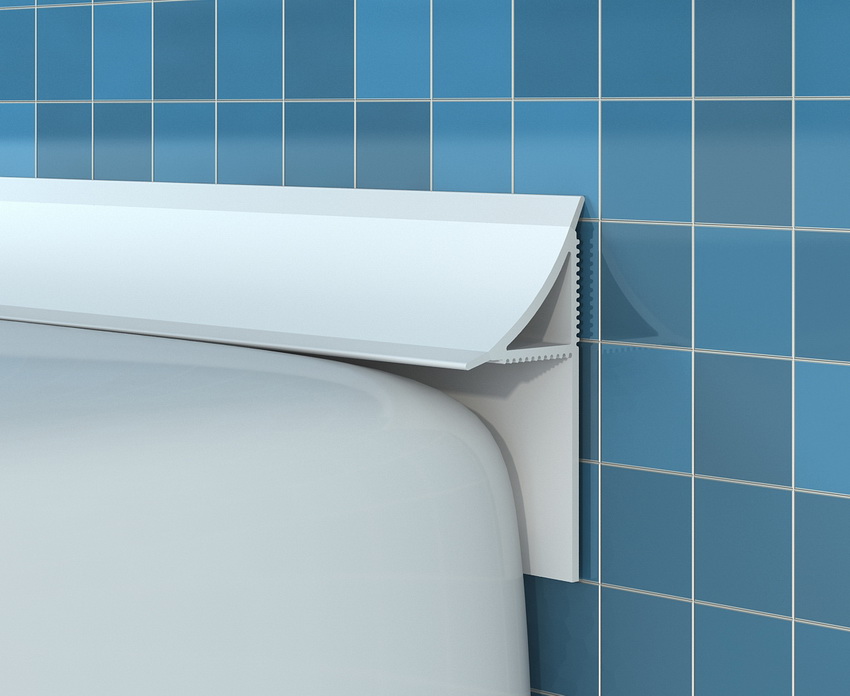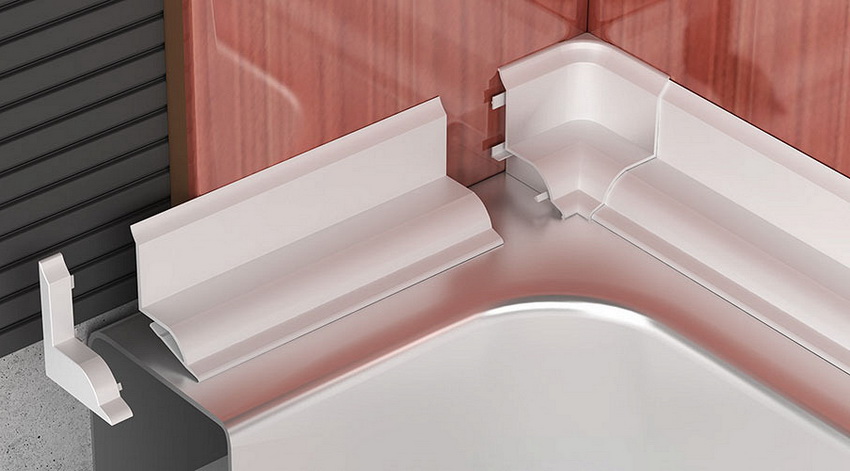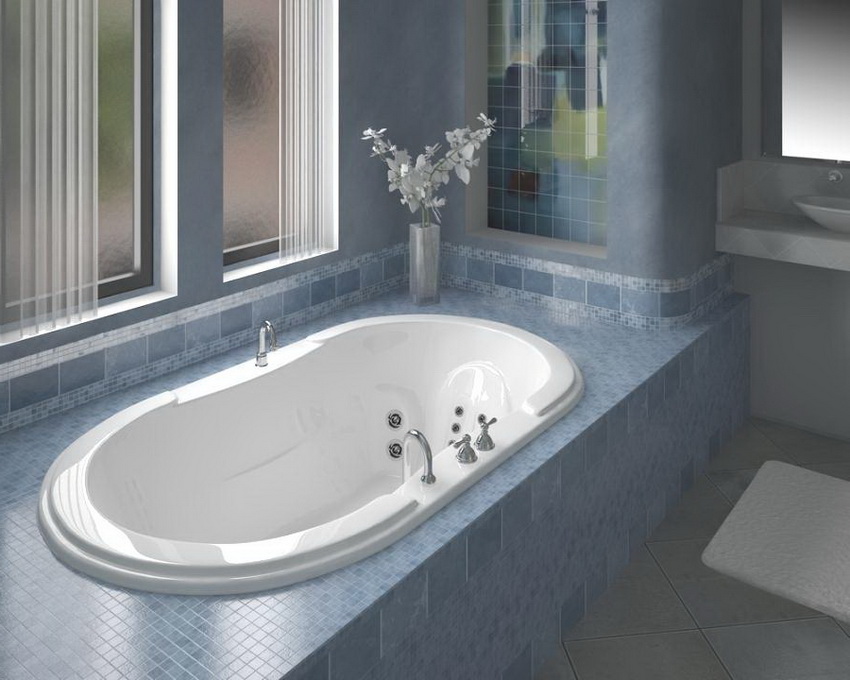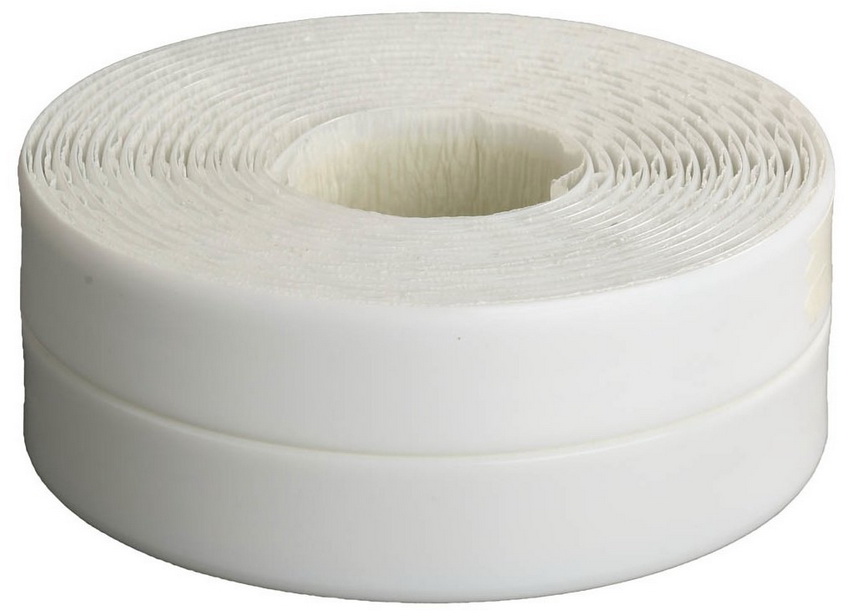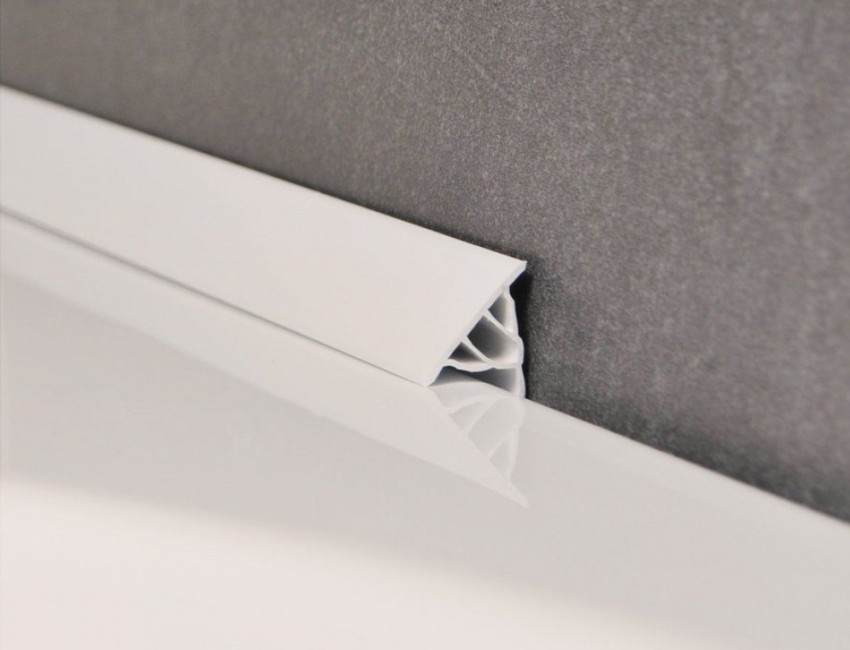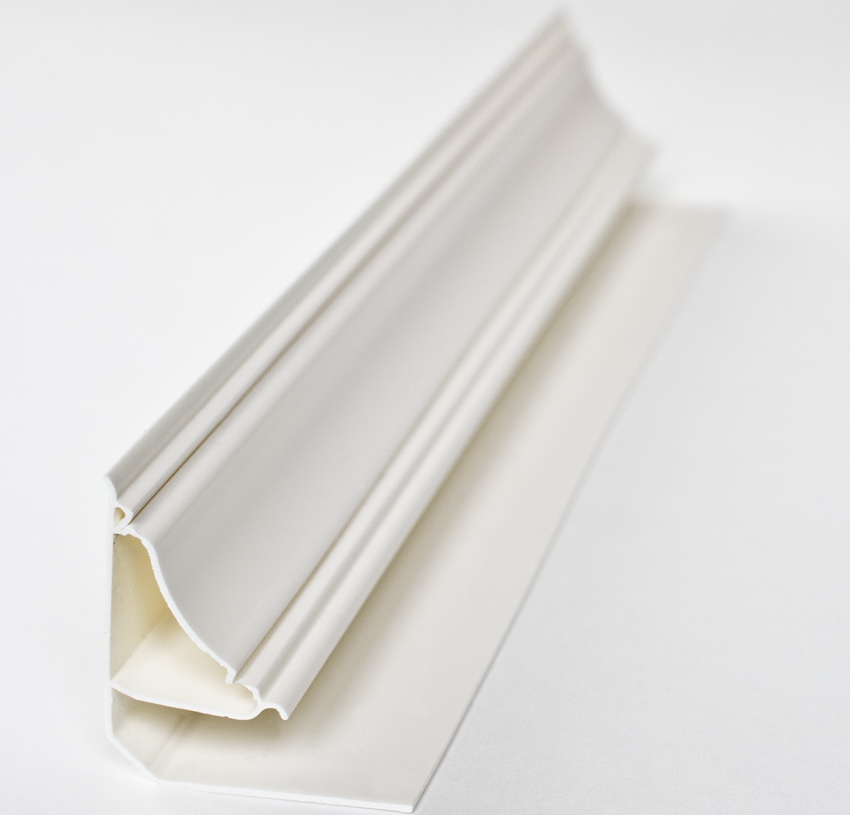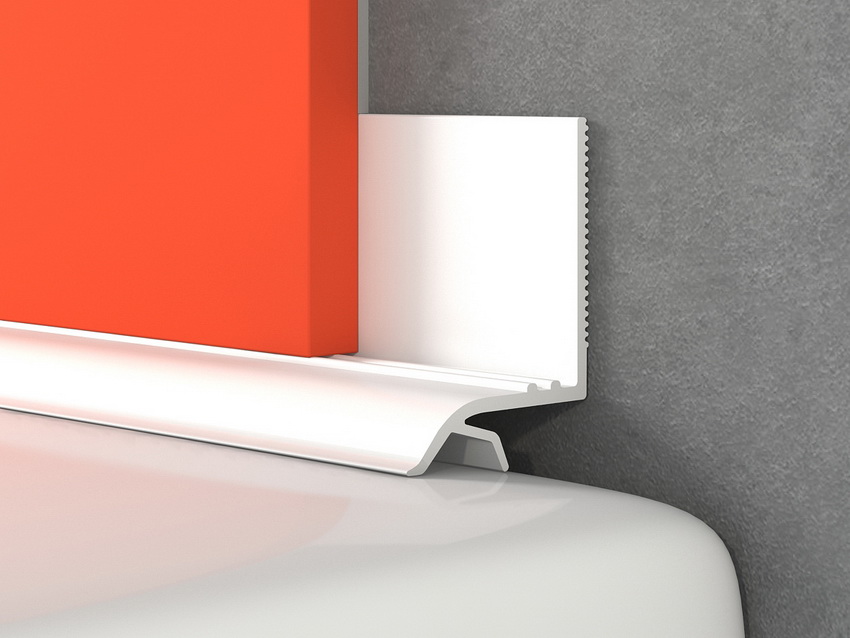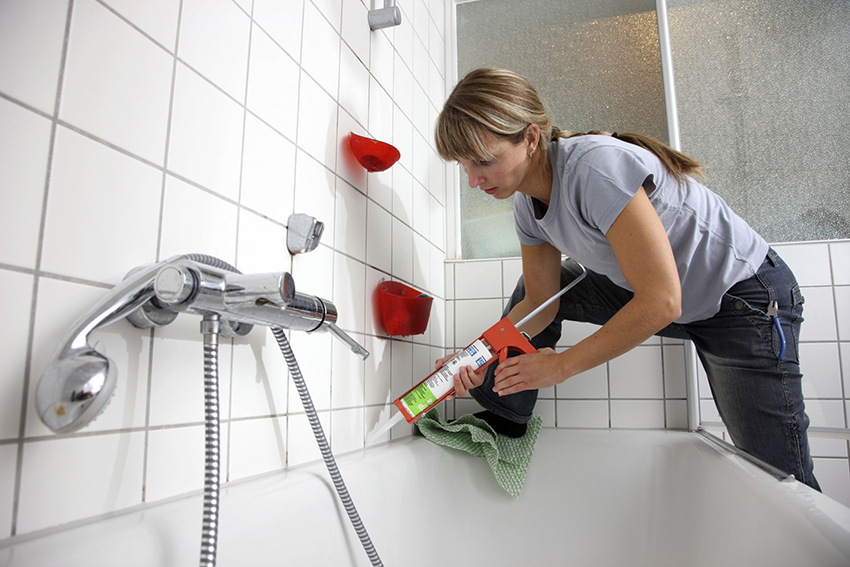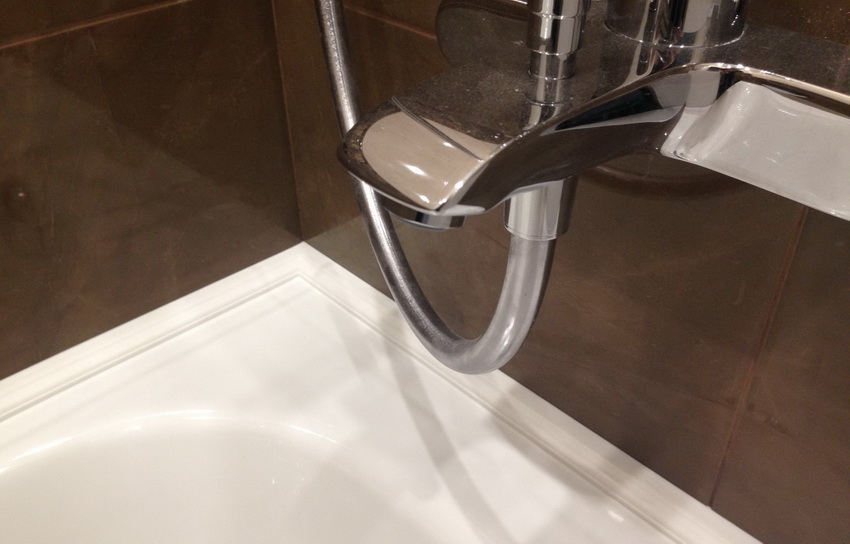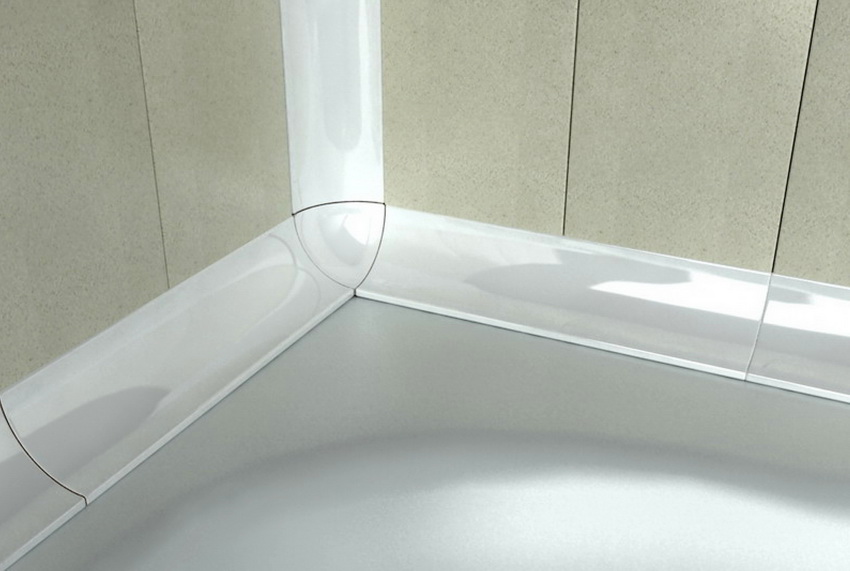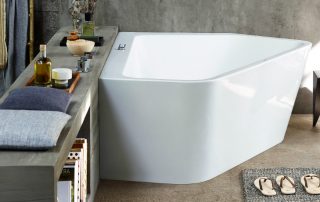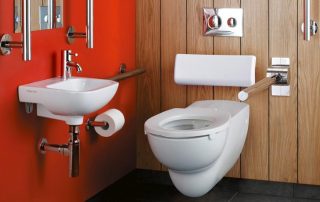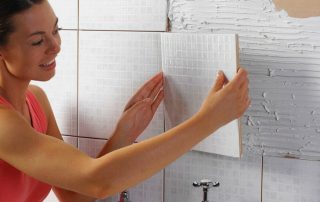No matter how hard you try to install the bathroom close to the wall, this will not work perfectly. Since there are no completely even walls in any house, then one way or another there will be a small gap into which water will enter. In the past, cement mortar was used in combination with oil paint to solve this problem. However, there is now a more modern and simpler solution - the bath skirting board. Consider all possible options for the design of the border, as well as their features.
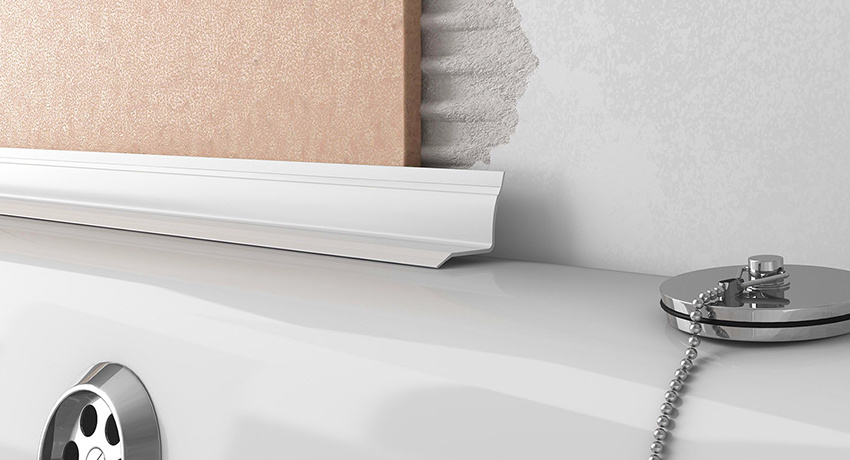
Content [Hide]
Features of choice and application fillets for bath
In addition to the fact that the open gap behind the bathroom does not look aesthetically pleasing, an open joint can cause the development of mold and mildew, which, in the first place, is unsafe for health. That is why you need to take care of sealing it and buy a bath border.
Moisture that gets into the joint dries for a very long time and often leads not only to the development of undesirable microorganisms, but also to the occurrence of corrosive processes on the metal elements located behind the bath. And since it is much easier to prevent these processes than to fight them later, we will consider what can be done to avoid this.
In the process of choosing a plinth, the following points must be considered:
- the cost of the material from which the border is made. It is worth noting that simple and affordable models cannot boast of a long service life, so if you want to solve this problem only once, you will have to spend certain funds on it;
- the material used for wall decoration also largely determines what the baseboard for the bath should be. Most often, a border is purchased from a similar material. If you used plastic lining or fiberglass for wall decoration, a plastic skirting board would be the ideal solution, for acrylic bath an acrylic skirting board is fine. Ceramic or stone borders are appropriate if the walls of the bathroom are tiled;
- the size of the gap is another decisive factor in favor of one or another material.
Whatever the initial data, today you can find a suitable option and arrange the joint between the bathroom and the wall so that it is not only functional, but also beautiful. After all, modern curbs can not only solve the issue of moisture entering the gap, but also support, and sometimes even decorate the interior.
Bath skirting board: variety of materials
In order to make a choice in favor of this or that material, it is recommended to familiarize yourself with all the existing options in advance, considering the advantages and disadvantages of each. Take a quick look at everything that is presented on the modern building materials market.
Plastic bath curb
The excellent technical characteristics of plastic, its strength and resistance to various external factors are one of the main advantages of this material, which testifies in favor of this choice. At an affordable cost, it can also boast of a fairly simple installation, which will greatly facilitate your work if you plan to do everything yourself. Plastic bath borders are available in a wide variety of colors, so choosing the option that will suit your interior is more than simple.
Fastening is done with a special adhesive or liquid nails. You can also find self-adhesive plastic bath skirting boards on sale. In order to fix such models, it is enough to remove the protective cover and install the part in the place where it should be located.
There are two ways of installation - a plinth under the tiles or on top of it. In the first case, work on installing the curb is carried out before proceeding with the laying of tiles, and in the second case, after the completion of the above-mentioned work.
Ceramic bath curb
The main competitor of plastic skirting boards is ceramic curbs. Distinguished by a longer service life, as well as high strength, they have won one of the leading positions in the modern market. This option goes especially well with the walls, for the decoration of which the tiles were used.
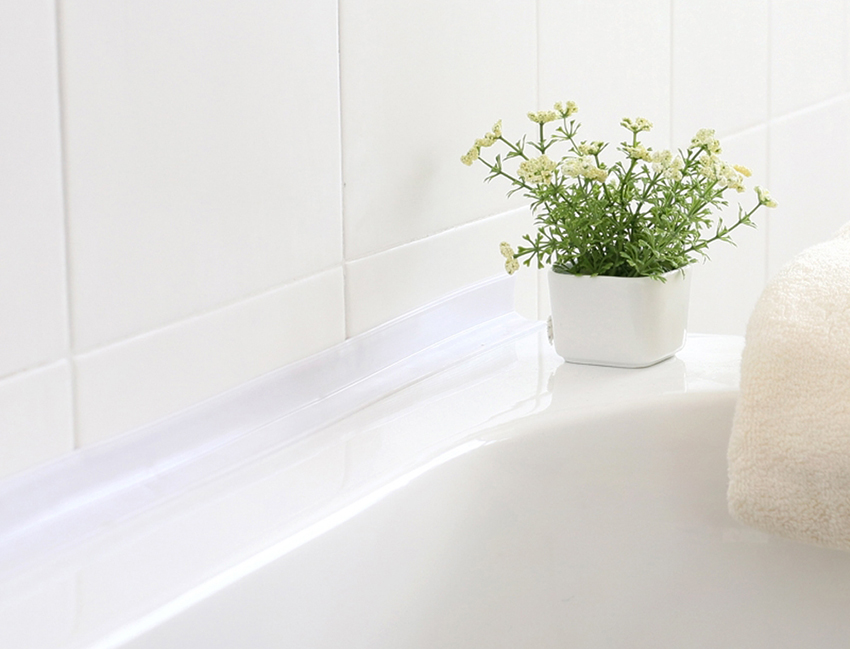
Once upon a time, the same tiles were used for this purpose as for the walls, manually cutting into pieces of the required size and attaching them in the same way as the tiles. However, today manufacturers offer not to waste efforts on measuring and fitting parts, but to purchase a ready-made ceramic plinth for a bath. Moreover, to facilitate the installation process, special corner elements are sold, which allow you not to adjust, but immediately fix the finished corner.
Another reason to buy a ceramic bathtub skirting board is its long lifespan, which can be measured in decades. However, it should be borne in mind that the period of service directly depends on the quality of styling and, despite the apparent ease, this process requires certain experience and skills. Therefore, if you have not previously dealt with such work, then it is better to entrust it to a professional in order to be sure of the result.
Advantages and disadvantages of a ceramic border
Advantages and disadvantages of ceramic skirting boards:
- ceramic curbs are very tight. They almost never leak water;
- if the distance between the wall and the bathroom is large enough and the installation of a plastic profile is not possible, the ceramic skirting board will easily solve this problem.It is recommended to fill the gap with pieces of brick of a suitable size, and then close it with a ceramic border;
- Certainly, a ceramic border will last you much longer than any plastic panel.

- the appearance of the ceramic border is preserved in its original form, which cannot be said about the plastic panels, which often turn cloudy and become covered with a characteristic yellow coating, which can easily spoil the appearance of the bathroom;
- the chemical composition of the material determines high resistance to a wide variety of external factors: temperature drops, tensile deformations, and so on;
- the range of ceramic bath borders is sure to impress even the most demanding user. On sale you can find both white and colored models, smooth and textured, concave and convex.
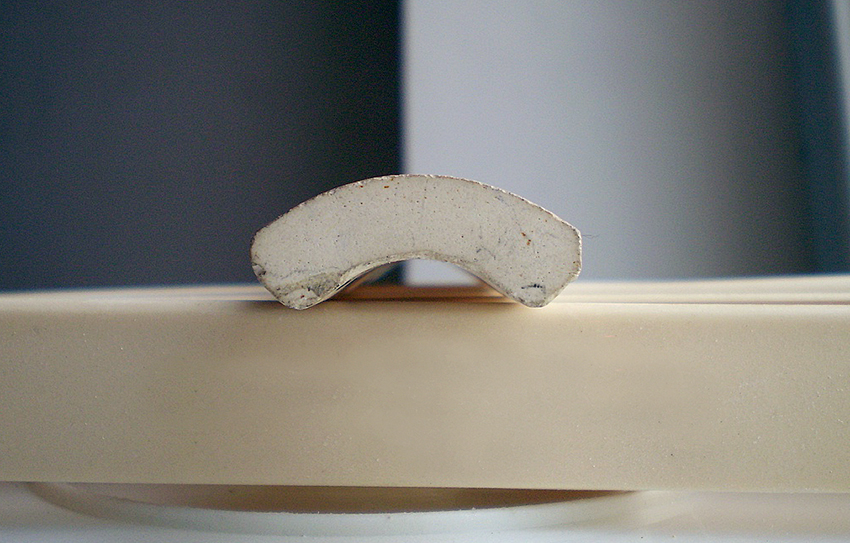
The only significant drawback of a ceramic skirting board is its low impact resistance. Dropping a heavy object onto the tile can damage it, leading to cracks in which water can enter.
Self Adhesive Bath Tape
This is perhaps one of the simplest and most convenient options for protecting the joints between the bathroom and the wall. Such ribbon bordersmade of polyethylene. They are designed to seal the gap. The self-adhesive bathtub skirting board is selected individually, depending on the desired size. The ability to choose the appropriate width and height of the curb provides reliable protection against moisture penetration.
As for the installation of a self-adhesive plinth for a bath, the technology is even simpler than in the case of installing a plastic curb. Due to the presence of an adhesive base, the tape is simply fixed in the right place, after which it is additionally sealed with silicone sealant.
Acrylic bath skirting board
Not everyone thinks about buying an acrylic plinth for a bath. First of all, because its cost is higher than analogues made of silicone. However, when it comes to choosing a plinth for an acrylic bathtub, then this is undoubtedly the ideal option.
The main feature of this material is its poor tolerance to thermal expansion, which is why its use is not always possible. For installation, use liquid glue with a silicone base, since even after drying it retains some plasticity.
Natural stone bathroom curbs
Skirting boards made of natural stone are a serious and rather expensive option, which, nevertheless, looks unique in any thoughtful interior. And although such an exquisite border cannot be called accessible to everyone, its popularity can hardly be underestimated.
In the selection process, you should pay attention to the compliance of such a plinth with the surrounding environment, choosing those models that fit in color and can fit into the already existing stylistic direction. It goes without saying that the use of a marble baseboard is preferable if the bath itself is made of the same material. And although such a design will cost a lot, one must pay tribute not only to its aesthetic component, but also to its excellent technical qualities: long service life and high strength of the material.
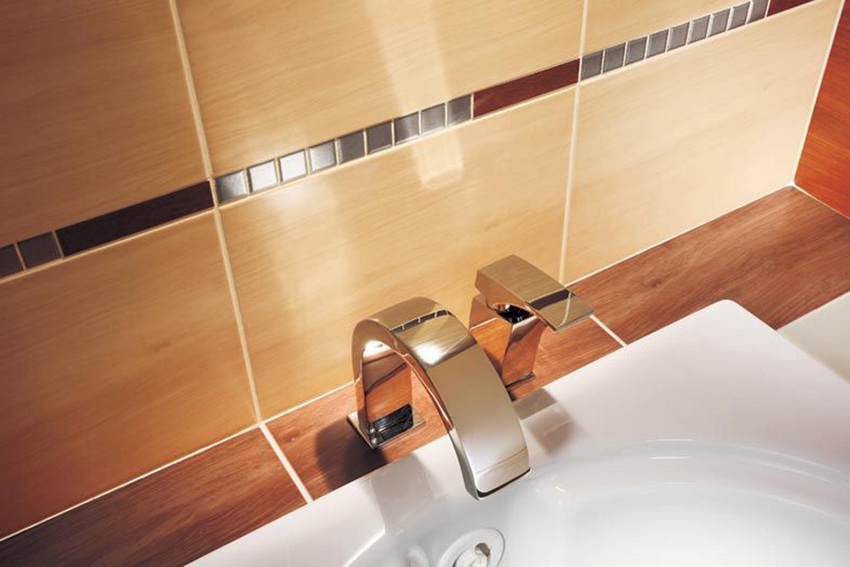
DIY installation of skirting boards on the bath
The two most popular options for decorating a bathtub joint are plastic or ceramic skirting boards.And if the installation of plastic borders and various adhesive tapes is quite simple, then the installation of a ceramic skirting board usually raises many questions. Next, we will consider the installation of both those and other models.
Plastic plinth on the bath: how to glue yourself
If you decide to buy a plastic bathtub skirting board, then this is a great way to save money. After all, regardless of which of the two possible options you choose (roll-up self-adhesive or PVC panels), buy a plastic bath curb can be done at an affordable price, and the installation can be done independently.
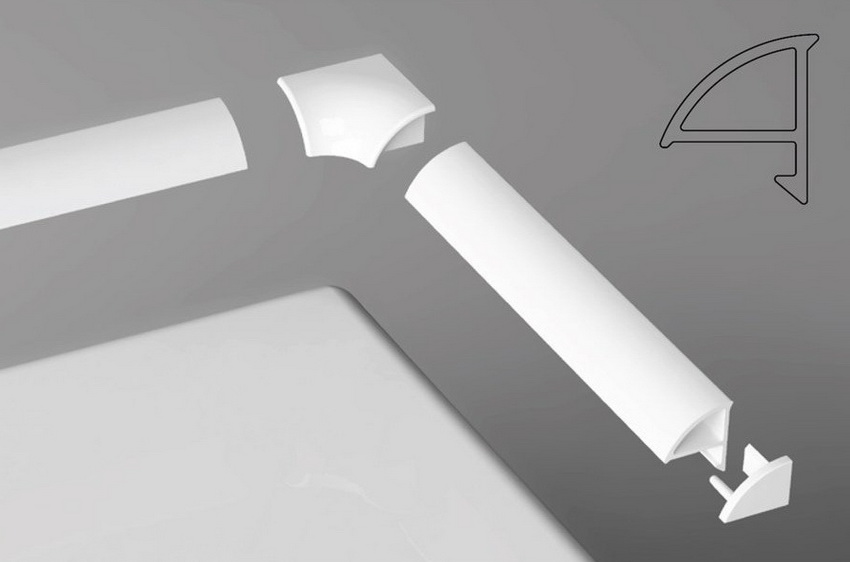
You need to understand that the self-adhesive border serves directly to seal the joint, while the plastic panel is just a decorative element that actually covers sealant... And in order to glue such panels efficiently, you will need to adhere to the following procedure:
- the area around the gap must be thoroughly cleaned of dust and dirt, and then wiped dry. After it must be filled with sealant and left to dry completely;
- using a building tape measure the length of the sides of the bathroom that are adjacent to the wall. Knowing the required length, you can adjust the existing profile. To ensure an aesthetic appearance, the edges are trimmed at a 45 degree angle;
- in order to carry out the gluing process as carefully as possible, use masking tape, sticking it to the edges of the bathroom. This will protect it from excess glue;
- the gluing procedure itself is carried out as follows: the panel is applied to the wall and pressed tightly. Then, bending up the small edge of the corner, the gun is inserted there and the sealant is squeezed out. When the seam is completely filled, you can smooth everything with a regular spatula. The same is done with the lower part of the curb. Once the sealant is completely dry, the tape can be removed.
Useful advice! It is a great advantage if you have an assistant during the work to help you hold and press the panel. This greatly increases your chances of making a quality installation.
In any case, you need to understand that plastic panels are not intended for many years of use. Most likely you will have to change them at high intervals. Therefore, consider in advance whether it would be better to give preference to a ceramic border.
Installing a ceramic border with your own hands
It is not so easy to install a ceramic curb well. But if you have at least minimal experience in carrying out repair work and you are ready to devote a sufficient amount of time to this issue, then this task is quite feasible. Moreover, there are two different installation methods. Let's consider each option in detail.
Related article:
Ceramic tiles for the bathroom: design, photo samples
Types of ceramic tiles used for bathroom design. Photos of finished objects in various styles.
Before starting work, you need to make sure that you have all the necessary tools and materials. This list includes:
- silicone sealant designed for operation in high humidity conditions (special additives prevent the development of fungi and mold in the places of application);
- a ceramic border, the amount of which has been calculated in advance (do not forget about the necessary stock);
- tile glue;
- a gun for squeezing out glue;
- putty knife;
- pliers;
- emery bar.
Useful advice! The calculation of the required amount of sealant is made individually. Roughly, about 100-150 ml is consumed for a standard size bath, depending on the thickness of the applied layer.
Another important preparatory stage of work is the calculation of the required amount of tiles. This can be done in the following way:
- Measure the sides of the bathtub that are near the wall and require sealing.
- Divide the resulting figure by the length of one curb element.
- Round the result up.
- Make a small reserve by purchasing a few additional items in case of damage to any of the skirting boards.
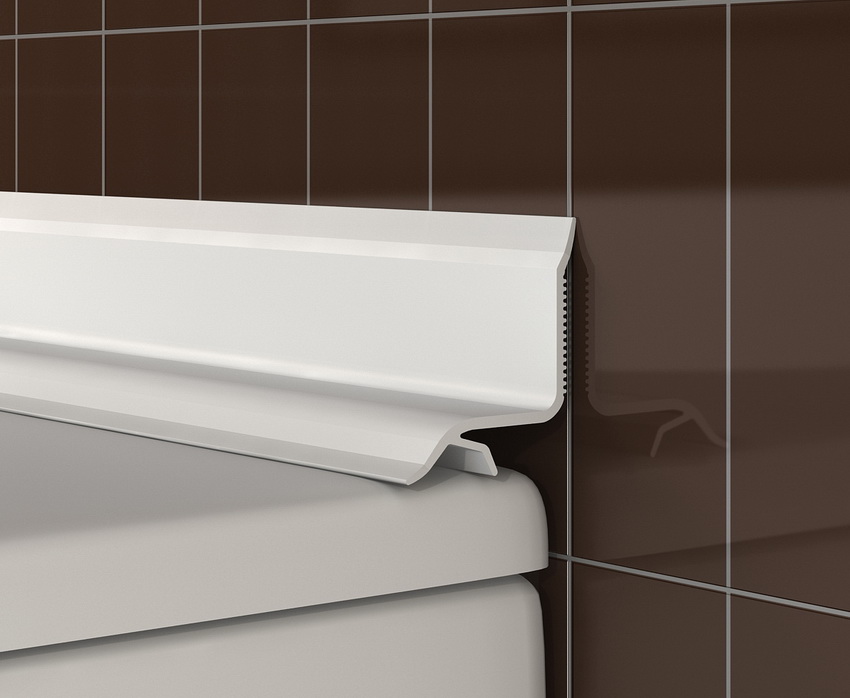
How to install a ceramic bathtub skirting board under the tiles
Installing a curb in this way traditionally begins with cleaning and cleaning the surface from dust and dirt. Make sure that the places where the elements will touch are dry. Be sure to degrease the surface. Then use a sealant to close the gap, filling it evenly. In order for everything to work out smoothly, use a spatula or do it by hand, having previously moistened it in water.
The main purpose of this procedure is to close any crevices and gaps that water may enter. Therefore, apply the sealant carefully and carefully and re-check the result.
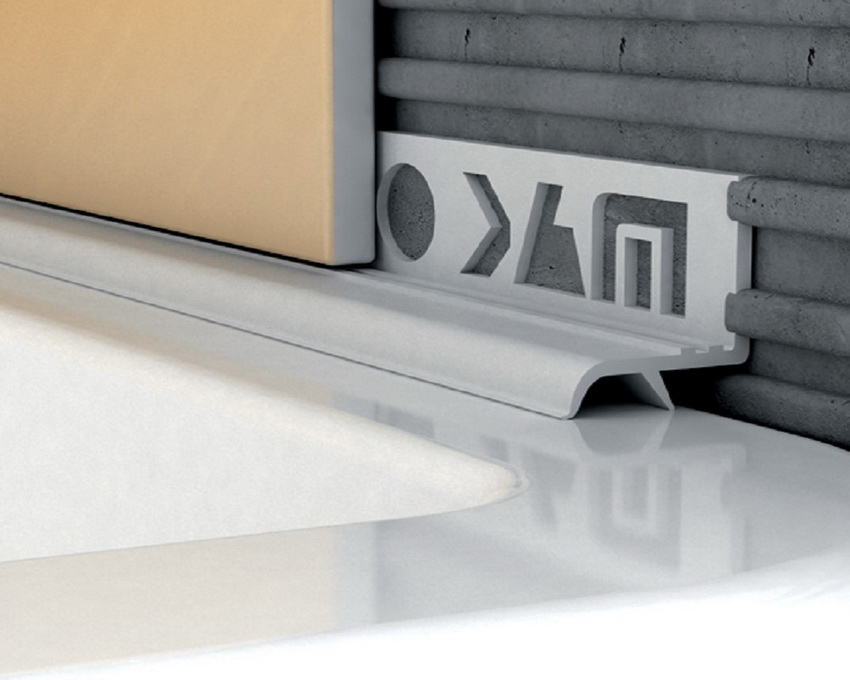
After the sealant has completely dried, you can start laying the curb. If you have a need to adjust the elements, it is recommended to use a grinder with a diamond disc or pliers for this purpose. In the second case, first draw the line along which you want to cut, and then "bite off" small pieces of the tile. For an aesthetic look, the edge must be sanded using an emery block.
Then an adhesive is applied to the reverse side of the curb and the tile is placed in its proper place. In this case, it is recommended to start from the corner, moving towards the edge. This will make it easier to fit the edge element.
Useful advice! Use a damp cloth to remove excess adhesive immediately without allowing it to dry. Otherwise, you will have to spend a lot of effort on this in the future.
It is necessary to place the elements of the curb as close to each other as possible so as to leave practically no gaps. And after the glue has completely dried, which requires at least one day, using the same grout that was used in the process of laying the tiles, it is necessary to close the seams. If the wall has large irregularities and you were unable to align the curb elements perfectly, use a sealant to fill the gaps.

How to install a ceramic trim on a tile
Another, easier way is to install the border on the tiles. In this case, it is necessary to start traditionally, with cleaning and degreasing the surface with which to work. The easiest way to fix it is with "liquid nails", but any other waterproof glue will do. After applying it to the wall, you must wait a certain time, which is recommended by the manufacturer of the composition.
As in the case of installing a border under the tiles, you need to start from the corner and work towards the edge of the bath. And in order to ensure the highest quality connection between the tile and the curb, it must be pressed tightly. Moreover, it is exactly how much the curb will be pressed during the drying process, and determines the degree of its further tightness.
All excess glue must be eliminated immediately, and in order to position the curb as evenly as possible, you can use the building level. After complete drying, it remains only to process the joints with grout.
Before you buy a plinth for a bathtub made of this or that material, you need to once again weigh all the arguments in favor of each. Attempts to save money do not always lead to positive results, although often excessively expensive options do not justify the waste. In any case, now you have an idea of all the possible options, and you can certainly make a choice that will not disappoint you.
